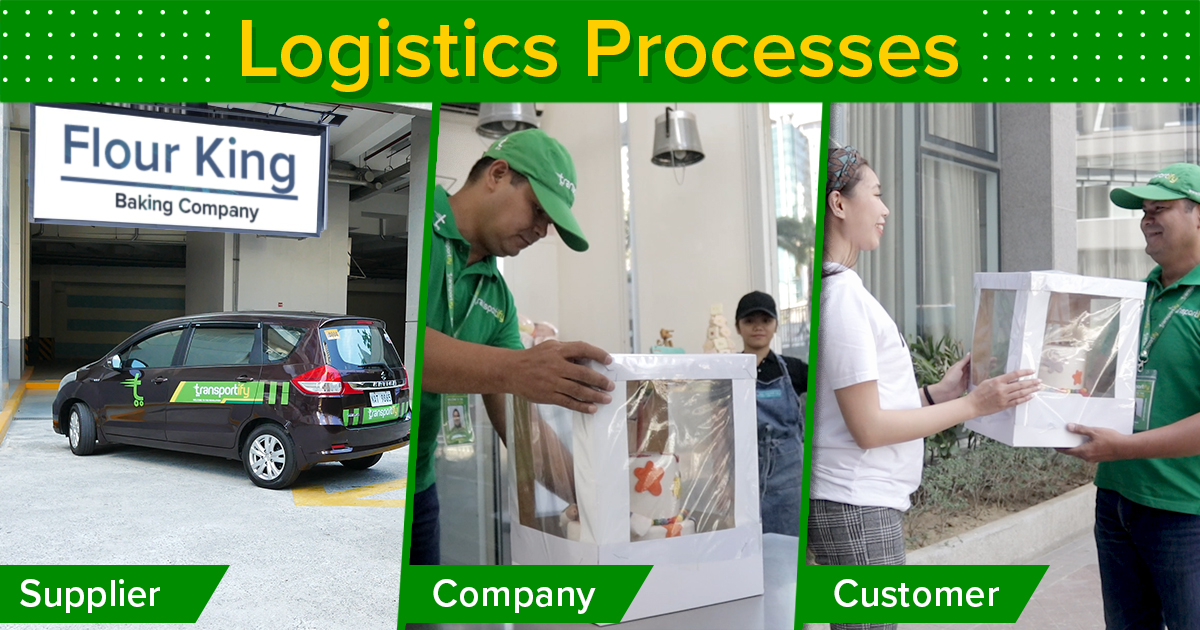
Logistics is the process that gets a product from the manufacturer to the consumer. It encompasses all of the steps in between, and it’s important to understand how it works so that you can make informed decisions about your business. This blog post will discuss the logistics process flow and define each step so you can see how they interact. We’ll also talk about what affects the flow and how you can optimize it for your business!
What Is Logistics Process?
The logistics process is the steps that a company takes to plan, implement and control the efficient, effective flow of goods, services, and related information from the point of origin to the point of consumption.
A typical logistics process flow includes:
- Supply Chain Planning
- Procurement Management
- Production
- Inventory Management
- Distribution and Delivery
Each step in the logistics process is interrelated with the others. For example, a procurement issue can affect production or inventory levels, affecting distribution and delivery schedules. Therefore, companies need to clearly understand their logistics process flow to identify potential bottlenecks and optimize their operations accordingly.
 |
Terms In Logistics Process Flows You Need To Learn
What Is Supply Chain Planning?
Supply chain planning (SCP) is the process of coordinating and managing all the resources and activities needed to meet customer demand for a product or service. It includes everything from raw materials procurement to manufacturing to distribution and delivery.
Supply chain planning aims to minimize costs while maximizing customer satisfaction. Businesses must clearly understand their capabilities and limitations, as well as those of their suppliers and customers. Effective businesses must understand customer demand. Decision makers must know how much of a product or service must be manufactured and when it must be delivered. Sales data, market research, and consumer surveys can all be used to acquire this information.
Once businesses have a good understanding of customer demand, they can start to develop a plan to meet that demand. This plan will include decisions about what products or services to offer, how to produce them, and how to get them to the customer.
Supply chain planning is complex, and many factors can affect it. These include changes in customer demand, supplier capabilities, manufacturing capacity, and transportation availability. These factors can throw off the entire supply chain and cause significant disruptions. Therefore, businesses must monitor these factors closely and be prepared to change their plans when necessary.
What is Procurement?
The procurement process in logistics flow is acquiring goods or services from an external source. It involves identifying and selecting suppliers, negotiating contracts, and placing orders with the chosen supplier. The procurement process is a critical part of the supply chain, as it can significantly impact the cost and quality of the goods or services procured.
What are the different types of procurement?
There are two main types of procurement: Direct and Indirect. Direct procurement is when an organization procures goods or services directly from a supplier without going through intermediaries. Indirect procurement is when an organization procures goods or services from an intermediary, such as a distributor or wholesaler.
What is Production?
Production is the process of transforming raw materials into finished products. This usually involves a number of steps, including manufacturing, packaging, and distribution. The managers must carefully coordinate all these steps to ensure that the final product is high-quality and arrives at the customer on time.
What are the different types of production?
There are two main types of production: Batch and Continuous. Batch production is typically used for products made in small quantities, such as specialty items or custom orders. On the other hand, continuous production is more suited for large-scale manufacturing, where products are produced in a steady stream.
What is Inventory Management?
Inventory management is the heart of the logistics process. It includes every step necessary to ensure that the right products are in the right place at the right time. This process begins with forecasting demand and ends with delivery to the customer. In between, there are a number of steps that must be carefully coordinated to avoid delays or shortages.
The first step in inventory management is forecasting demand. This can be done using historical data, market trends, and customer orders. Once demand has been forecasted, production can be planned accordingly. The next step is to procure the necessary materials and components from suppliers. This includes negotiating contracts, placing orders, and ensuring that materials are delivered on time.
What are Distribution and Delivery?
The distribution and delivery process is the final stage in logistics, where goods are delivered to the customer. This process can be further broken down into three sub-processes: transportation, storage, and handling.
Transportation is the first step in distribution and delivery, and it involves getting goods from the supplier to the customer. Transportation can be done by land, sea, or air. Storage is the second step, and it involves keeping goods until they are needed. Finally, handling is the third step, which involves preparing goods for transport and loading them onto vehicles.
All of these steps must be coordinated to ensure that goods are delivered on time and in good condition. Distribution and delivery can be affected by many factors, including weather, traffic, and the availability of resources.
If you’re planning to start a business or improve your current one, it’s important to understand the logistics process flow. Doing so can ensure that your goods are delivered on time and in good condition.
Learn more logistics and delivery terms from Transportify’s glossary.
SEE ALSO:
- What Is Shipping Management and What Does It Include?
- What Is Transport Management System? (2023)
- 5 Reasons Businesses Should Have Transport Management System
How Do These Different Logistics Process Flows Affect Each Other?
The different logistics process flows are all interconnected. One flow cannot happen without the other flows happening first. For example, you cannot have inbound logistics without having outbound logistics first. For something to come in, it must first go out. The same is true for the reverse process. So outbound logistics cannot happen unless inbound logistics happen first.
Each stage of the process flow is affected by the stage before and after. Therefore, if one stage is not working properly, it will ripple effect the rest of the process flow. This is why it is important to make sure that each stage of the process flow is running smoothly.
Learn about the three types of logistics here.
Many different factors can affect the logistics process flow. Some of these factors include:
- The type of product or goods being shipped
- The origin and destination of the shipment
- The mode of transportation being used
- The time frame in which the shipment needs to be delivered
- Any customs or import/export regulations that need to be followed
By understanding how the logistics process flow works and what affects it, you will be able to manage your shipments better and ensure that they arrive on time and without any issues.
 | or |
Frequently Asked Questions:
What is the typical flow of logistics?
🚚 The logistics process flow typically involves four main steps: planning, procurement, production, inventory, and distribution. Planning is the first step and involves figuring out what needs to be done when it needs to get done, and how it will get done. The second step, procurement, is all about acquiring the resources needed to complete the task at hand. This could involve purchasing materials, hiring staff, or renting space. Production is the third step and is where the actual work of putting everything together takes place. The fourth step, inventory, is all about keeping track of everything that has been produced and making sure it is ready to be distributed. The final step, distribution, is all about getting the product to the customer.
What is the most important step in logistics flow?
🚚 There is no one “most important” step in logistics flow. All of the steps are necessary in order for the process to work properly. However, if one step is not done correctly, it can have a ripple effect on the rest of the process and cause delays or other problems. For this reason, it is important to make sure that each step is done correctly and that there is good communication between all of the different parties involved.




 INSTANT QUOTE
INSTANT QUOTE

 Chat
Chat